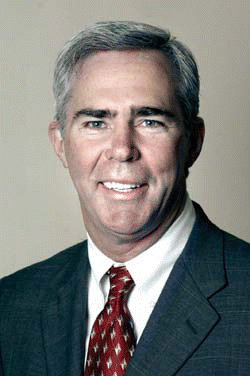The first treatment is two minutes long, and all treatments can be a maximum of three minutes long. No more than four treatments per week are recommended. The treatment can be repeated in case of an allergic reaction or at the onset of a new pollen season. Due to the lack of proper clinical data and experience, the treatment can be applied only with individual evaluation of risks in patients younger than age 14.
Explore This Issue
March 2007Rhinophototherapy is being used in more than 150 centers throughout 11 European countries, added Dr. Kemeny. More than 30,000 patients have been treated in the last three years.
Patients for whom this treatment is contraindicated include those with nose abnormalities, acute respiratory infections, history of repeated and/or severe epistaxis, nasal tumors, photosensitivity, photoallergy, or use of concomitant therapies such as antibiotics that are photosensitizing, according to Dr. Koreck, who spoke to ENToday in March 2006.
Remaining Questions
The experts interviewed for this article agreed that more research is needed. Even though the technology sounds promising, practitioners need long-term efficacy and safety data, said Pramod S. Kelkar, MD, an allergist-immunologist at Allergy and Asthma Care in Maple Grove, Minn. Physicians also need to know how the rhinophototherapy compares with other treatments, he said.
Such data are currently limited. However, in a pilot study (Clin Immunol 2005;115(suppl.1):S50), Dr. Kemeny and his colleagues compared the clinical efficacy of rhinophototherapy with a nonsedating antihistamine, fexofenadine hydrochloride, in 18 ragweed-allergic patients in Szeged, Hungary, during ragweed season.
Eleven patients received intranasal irradiation with increasing doses of mUV/VIS light for two weeks and seven patients received 120 mg fexofenadine HCl once daily for the same period of time.
Rhinophototherapy resulted in a significantly better reduction of individual symptom scores for rhinorrhea and nasal obstruction and of total nasal score compared with fexofenadine HCl, reported the researchers. However, no significant differences between the two treatments were observed in reducing symptom scores for sneezing, nasal itching, palate itching, and eye symptoms. This suggests that intranasal phototherapy may be an alternative for patients not controlled by antihistamines, wrote Dr. Kemeny and his coauthors.
In addition to comparing efficacy, studies of rhinophototherapy also need to consider how acceptable the technology is to patients compared with other allergic rhinitis treatments, said Dr. Hadley.
Patient acceptance of rhinophototherapy may be favorable because people may be more likely to undergo 15 to 20 minutes of rhinophototherapy for a couple of weeks, versus nasal medications that have side effects, or shots, which can be painful, said Dr. Hadley.

Leave a Reply